The relay is one of the few mechanical components, that has not yet been supplanted by integrated circuits components in audio equipment. There are integrated circuits on the market, that can replace relays and they can be found in budget constructions, but in devices where quality is put above cost, there are still mechanical relays.
I decided to write this short article, because once again back to me topic, about the quality of relays. The quality of the relays used in the signal path has a large impact on whole sound of device, which I have already experienced more than once during my modifications. However, the choice of the relay itself is no so simple, because the parameters given by the manufacturer do not always coincide with the reality. I do not suspect manufacturers of providing false parameters in datasheet, but as the following example shows, relay elements can be made in various ways. We must also take into account the fact, that relays installed by the factory in devices may have other parameters in accordance with the device manufacturer’s instructions.
It’s been some time since I exchanged relays in my Cambridge Audio AZUR 651A amplifier (replacement of the MASSUSE ME-11-012-2Z4 relay on RELPOL RM84-2012-35-1012). The exchange has positively and clearly improved sound quality, although according to catalog data, the relays did not differ from each other. In case of the MASSUSE relay, it is not possible to determine exactly which type of contact material were used on the contacts, but there are only 2 options in the datasheet and both should contain silver (AgNi, AgSno). I decided to look inside both relays and see if what I hear can be verified visually. Replacement of relays is described here. Recently, I found relays in my collection that were dismantled at that time, and their current state, after more than 2 years, revealed some more details.
Both relays, after removing the casings did not differ significantly, at least the visual assessment did not reflect the audible difference in sound. The only thing that could be deduced from their interior is the darker color of the contact strips in the MASSUSE relay, which may have suggested earlier exposure to oxidizing agents. The surface of MASSUSE relay contacts showed discolorations that suggested a small contact surface, which could have contributed to the worse sound quality.
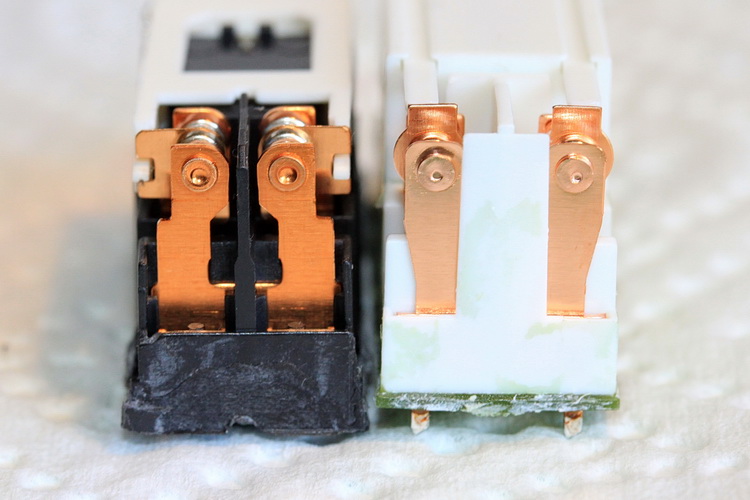
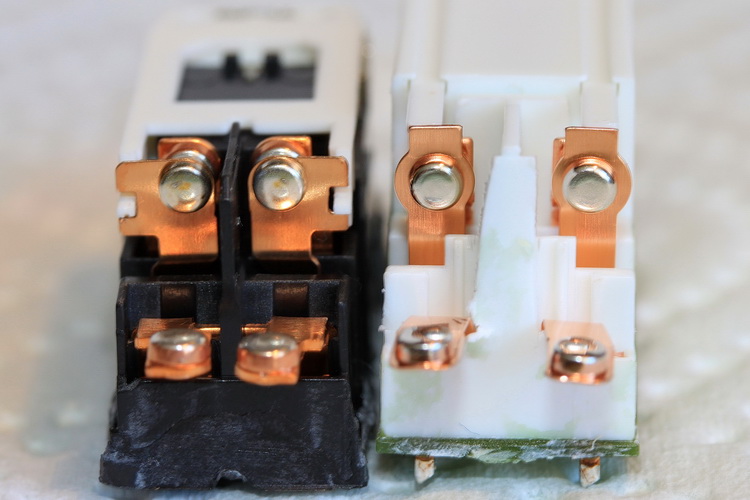
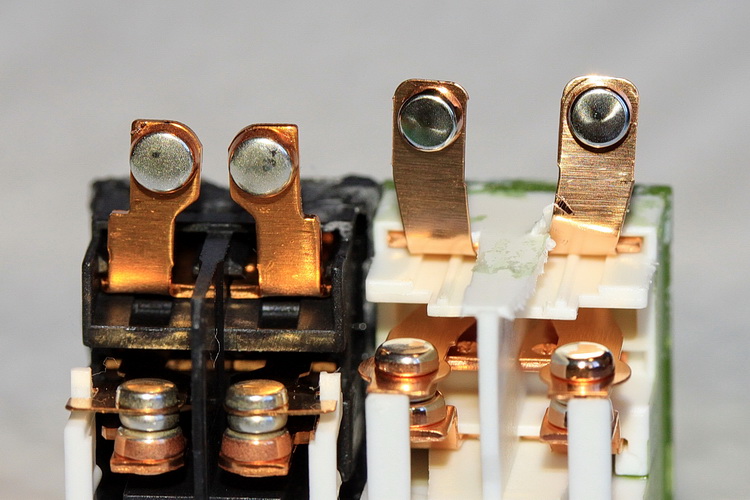
The state of the relays, after more than 2 years of exposure to oxidizing agents, revealed more details that confirmed the better quality of the RELPOL RM84 relay. As you can see in the pictures below, the contacts of the RELPOL relay are much darker, which suggests using a different metal mixture covering the contacts, containing a large amount of silver. The MASSUSE relay contacts are also darker, but this is not a change as large as in the RELPOL relay.
Another issue that I am able to better judge after this time is the contact surface of the elements. The RELPOL relay contacts were made with high precision, because on the contacts that were connected for the whole time, the material did not oxidize. It is also an irrefutable proof, showing the difference in the contact surface of contacts in both relays. In one of the photos I managed to capture the mirror surface of the RELPOL relay contacts. I am very positively surprised that in such a relatively cheap relay, the contacts were made with such high precision, which certainly is reflected in the electrical parameters and in the difference in quality that can be heard.

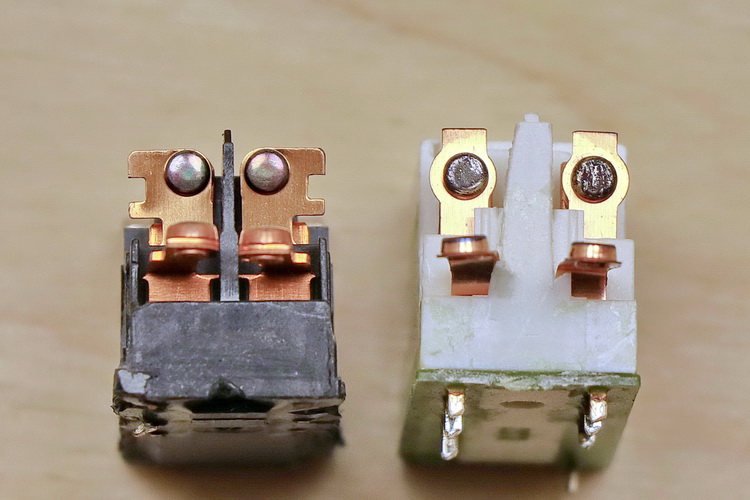

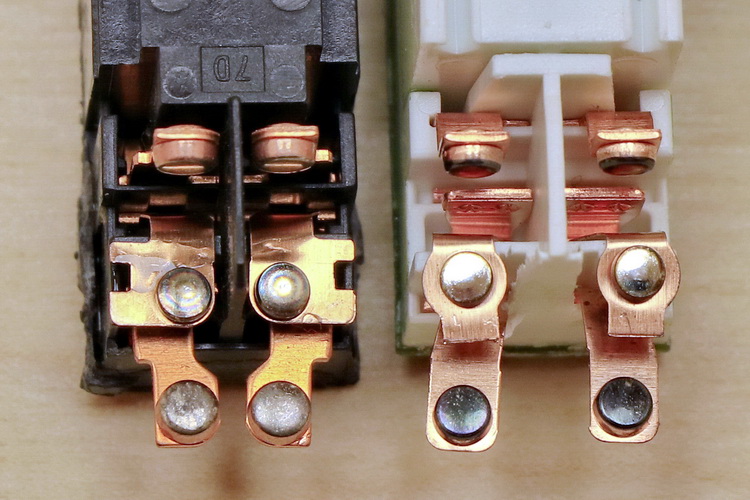

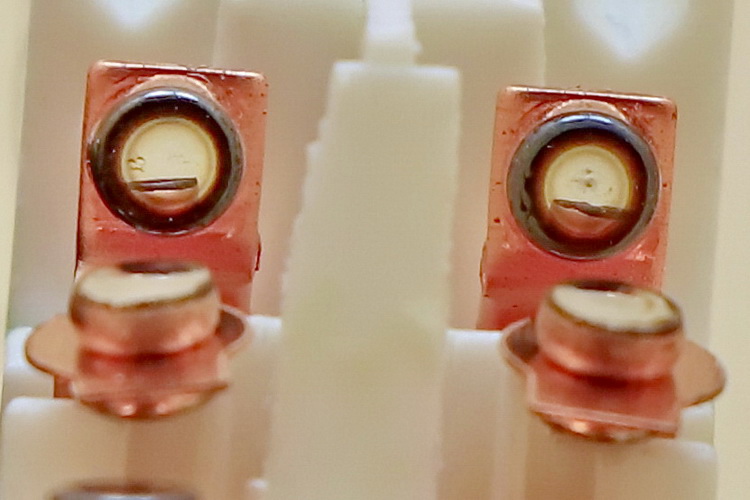
This is another example, that sometimes it is worth trusting your intuition and replacing the element whose datasheet suggests that there are no differences. Unfortunately, we can never be sure that the device manufacturer has ordered from the manufacturer of relays, goods accordance with its guidelines. This is a common action, and in the case of budget and even middle class devices, such action is always aimed at limiting costs, thus the quality of the elements. That is why it is worth consider about this issue and think thru what sometimes has to pass an audio signal before it reaches our expensive wires, gilded sockets and plugs. The RELPOL RM84 relay is not an audiophile construction for big money, its price is about 2 USD, so the price to sound ratio that we get at this price is undisputed.


